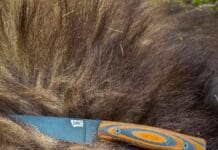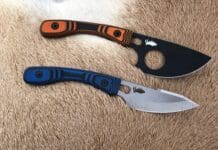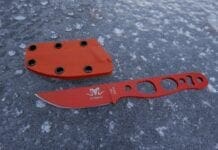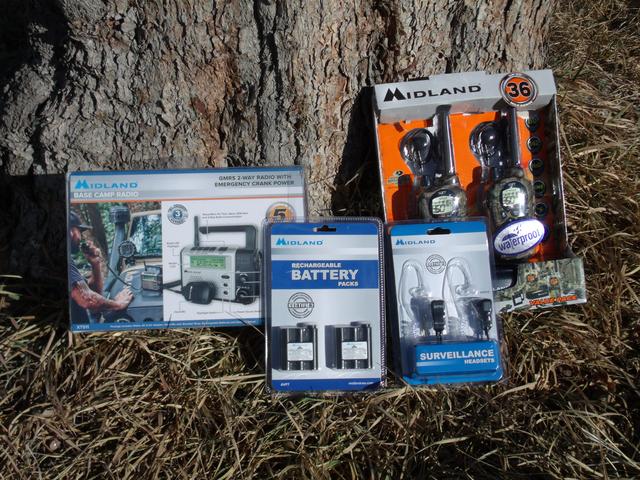 Communication between members of a group hunting an area can be important to success and safety. Picking the right radio for a hunt is no different than selecting the proper cartridge or arrow weight. In a previous article, No Service – No Problem, I wrote about how communication back to family in a location away from the hunting camp can be imperative when hunting solo. I also reference GMRS rules for licensing there. As an amateur radio operator, K0FFW, my portable handhelds serve this purpose well. However, finding functional alternatives for unlicensed radio operators broadens the opportunities to include friends and family who are not licensed for amateur radio use. The Midland Radio GXT1050VP4 is a robust alternative for hunters wishing to communicate when afield (where legal) or traveling in separate vehicles to a destination.
Communication between members of a group hunting an area can be important to success and safety. Picking the right radio for a hunt is no different than selecting the proper cartridge or arrow weight. In a previous article, No Service – No Problem, I wrote about how communication back to family in a location away from the hunting camp can be imperative when hunting solo. I also reference GMRS rules for licensing there. As an amateur radio operator, K0FFW, my portable handhelds serve this purpose well. However, finding functional alternatives for unlicensed radio operators broadens the opportunities to include friends and family who are not licensed for amateur radio use. The Midland Radio GXT1050VP4 is a robust alternative for hunters wishing to communicate when afield (where legal) or traveling in separate vehicles to a destination.
Initial Bias
As a HAM radio nerd, I tend to be biased against GMRS* radios. Early versions from around the year 2000 were underpowered, battery eating, feature limited, fragile units which lived up to their $30/pair price tag from big box stores. My hunting partners and I destroyed multiple pairs of radios on ATV and hunting trips. Midland’s GTX1050VP4 have made me rethink my bias and I can honestly report that these units are worthy of inclusion in my hunting gear. My one complaint about the units I evaluated is that I did not have them available for my backcountry elk hunt with my hunting partner in late August!
*While a license is required to operate a GMRS frequency, 96% of users do not acquire the license.
Midland Radio Setup
When I unboxed the Midland Radios my first test was to see how easy they were intuitively to set up. Like most men, I bypassed the instructions and went straight to pushing buttons and experimenting with the units. The feature menus are easy to navigate and within minutes I had the units set up for basic use. I then referenced the simple user’s guide to further explore some of the more advanced features. Once you learn what some of the abbreviated menu options reference, it is easy to remember where to go for what feature control. I have used hundreds of amateur and commercial radios and none have been as intuitive to set up and customize for personal preferences as the Midland Radio GTX1050VP4. A summary of the radio specifications can be found here.
Storage and Protection
I put all the radio accessories in a double-pistol case that was lying around and it worked great to keep things together and organized.
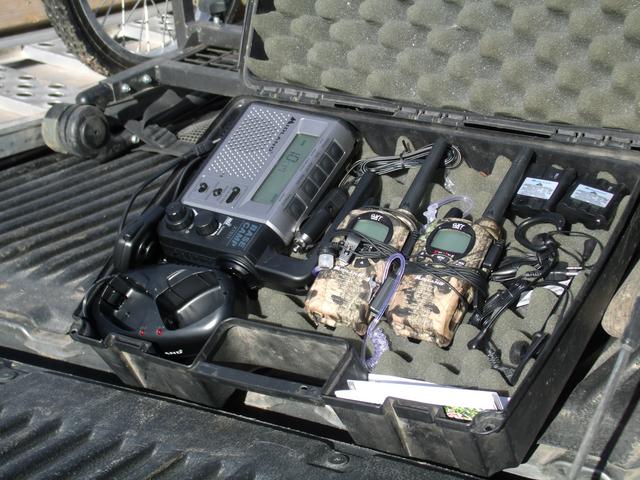
The Midland Radios are robust and worthy on their own, but for my purposes, the real gem was the Midland XT511 Base Camp. My late season hunts where I was able to put the radios through the paces were on the PJ-cholla plains and canyons of eastern Colorado for late season cow elk, muzzleloader deer, and numerous small game hunts. I am fortunate to be able to drive to my favorite area for day hunts, only two hours away, but I prefer to take my small camp trailer and stay a few nights at a time. My wife and twelve-year old daughter generally accompany me on these short trips. I was comparing these units’ performance directly against the amateur radios I generally take with me on my hunts. My trailer has an amateur radio base unit permanently installed which provided a comparison with the XT511.
Power Options
Midland hit the mark on making these units user friendly. The handheld units, as well as the base radio all, can use standard AA batteries (four per radio). All come with a rechargeable battery pack also. Surprisingly, they all use THE SAME battery pack! Interchangeability between units is designed into their construction. All can be charged either via 12V power port (cigarette lighter for us older folks) or AC wall wart. Again – they all use THE SAME cords between base and handheld units. Charging times are listed as 12 hours – this trickle charging facilitates longer battery life for the replaceable battery packs. While I carry a small Harbor Freight generator in my trailer, it is rarely used and I appreciated the 12V charging option so I could charge the units either in my truck or in my trailer.
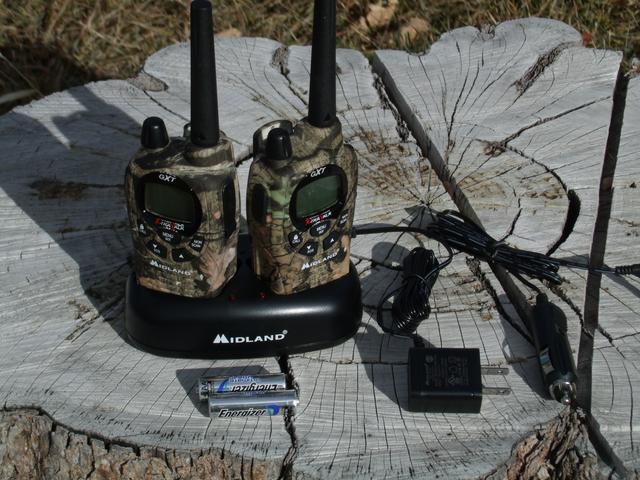
Earpiece Options
Having used portable radios for 10+ years in the woods, I knew what I wanted in terms of accessories. The portable Midland Radios come standard with an over-the-ear D-Loop earpiece. Everybody in my family wears glasses and I know from past experience that these D-Loops can become uncomfortable after several hours. I opted for the flexible acoustic tube earpieces, the AVPH3 Surveillance Headsets. These have a push-to-talk (PTT) microphone that clips on a shirt collar or hoodie string so you do not have to pick up the radio to talk or listen.

The standard ear plug they come with is soft silicone and very comfortable. It is important to note that ear shapes and sizes are different between individuals and I encourage anybody who uses a surveillance headset like these to go to a local commercial radio shop and look at the options available.
My Preference
I personally like the open-ear plugs which allow ambient noise to be clearly heard while also providing radio audio, but these come in four sizes and only the proper size will yield a comfortable fit that stays in the ear all day without issue. Speaker microphones are also available for the portable units and these have a port for an audio-only earbud also. I run the wires from the radio on my pack belt up under my hoodie and out the neck. To drop my pack, I just unclip the radio from the pack onto my pants pocket and no wires get tangled up.
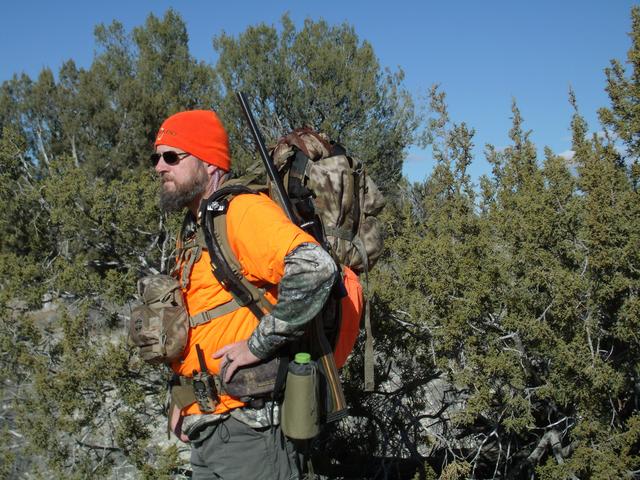
Waterproof Testing
The portable Midland Radio units are listed as waterproof, which really means splash-proof when you research the standard. The plains of Colorado only get 15 inches of precipitation per year, so I tested at the kitchen sink. I poured a quart of water directly onto the face and sides of a radio. After a shake to get the excess water off I turned on the radio and it still worked. I took off the battery compartment and wiped with a piece of tissue and no moisture entered the case. Midland Radio passed with flying colors. This is a test I would NOT do with my $200 Yaesu portable!

XT511 Base Camp Radio
My daughter and wife don’t always enjoy the early morning hunt with me and stay in the trailer. This is where the XT511 Base Camp radio really shined. With the speaker mic attached and loud audio, they could remain in constant communication with me as I wandered 5-10 miles away through the PJ flats and arroyos. When they went outside to soak in the morning sun outside camp, they can just take the unit with them. In the evenings the addition of an AM/FM radio in the camp was an unexpected creature comfort we typically do not have. The XT511 has an emergency hand crank for recharging the battery pack also.
A little room for improvement
My one complaint about the units is not a fair complaint. I wish the Midland Radio XT511 had the option for a replaceable antenna. In very marginal areas, my amateur radio base had better reception than the XT511, solely due to the amateur radio base having a better antenna on the roof of the trailer while the XT511 antenna is mounted to the radio itself. In the future, a worthy design upgrade would be having a BNC rubber-duck on the base so those who wanted to could easily attach a magnetic mount antenna running atop their camper or hanging from a ridgepole in a wall tent. Midland does have a solution, however. On their website, they offer a true high power mobile radio, the MXT400. I’m hoping to test and install one of these on my ATV/truck and in my trailer in the coming year.
Real World Testing
The real test of the handheld units was when I put my daughter on my glassing rock with the spotting scope and I ventured into the canyon trying to get on the elk herd I spotted. Entries into the canyon are few due to the rimrock and I had to walk a mile up canyon in order to drop below the rim into the heavy pinyon-juniper laden canyon where we saw the elk earlier in the morning.
While I was hiking into the canyon, the herd blew out. Emma was able to call on the radio and tell me they had spooked. I was able to climb up the canyon side just in time to see cream-colored butts going up the far side of the canyon into the adjacent GMU, where my tag was not valid. Had she not been able to alert me to their movement I would wave wandered in the canyon for hours figuring out where the herd ghosted to.
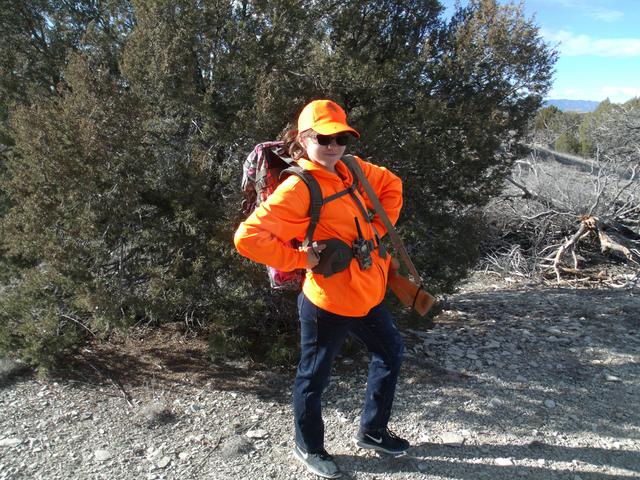
Range in the Field
Laying out the maps of where I hunted with the Midland radios, we regularly covered distances of 10 miles between handheld radios and due to topography were usually not “line of sight” with plenty of pinyon and juniper adding to the radio signal blockage. Everywhere my HAM radio had simplex (radio-to-radio) coverage back to my wife/daughter, the GTX1050VP4 had coverage also. Audio quality and reception between the amateur radio and GMRS were at least equal, with often the GMRS being clearer on louder audio settings through the earpiece.
Keypad Lock
The keypad lock feature on the Midland Radio prevents Murphy from complicating things afield. I highly suggest using this after units are set up and proofed for proper operation.
Battery Life
In total, over 25 days were spent afield with the units from September through December. Even on the longest days with plenty of conversation, I never used up a battery. Battery life of the GTX1050VP4 Midland Radios exceeded that of my Yaesu amateur radio. I always carried an extra battery just in case but never found occasion to use it. On a backcountry trip where communication would tend to be more planned and sparse, I can easily see two batteries lasting five days. As a note, the battery pack cannot be charged unless in a radio in the charger. Here again, the base radio was key for me. I would put an extra battery in the base radio and let it charge during the day and then swap it with another battery in the evening when I returned to camp, so I always had a fully charged spare.
Accessory Compatibility
In the radio industry, it is common for manufacturers to design radios so “only their accessories fit that model”. Midland Radio did the consumer a favor by basing these radios on interchangeability of accessories/batteries between the base unit and the portables. This will save the consumer money down the road. The acoustic eartubes are interchangeable with readily available commercial accessories – much easier to replace a worn/dirty $3 tip than a $40 complete setup.

Discreet Use Options
The “whisper” and “call” features were very beneficial in the field and tailored to the hunter. The animal call alerts are somewhat cheesy and not useful when using a headset. They would be useful if not using a headset. The vibrate alert is a feature I used extensively when not using a headset. It allowed me to mute the volume completely and only turn it up when I received a call from another radio. I do not like VOX (voice activated transmission) but it tested as sensitive and operational. If I step into a cholla what I might say does not need to be sent over the air…. I like pushing a button to transmit.
Conclusion
Midland has changed the way this professional radio technician views GMRS radios. The quality of the build rivals commercial and amateur radio lines and the durability is superior to my amateur radios which cost 2-3 times more. The radios weigh in at less than 8 ounces, with an extra battery. That’s about half what an amateur radio weighs in at and Midland Radio is offering has much better battery life.
If I need to use a repeater system to talk to my family from the backcountry, I will use my amateur radio. However, if communication between individuals is my primary concern the Midland Radio units will be on my belt. Kudos to Midland for a robust and durable solution for communication in the woods.
You can comment or ask Chas questions here














